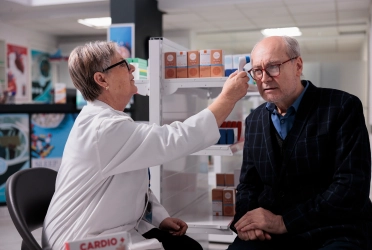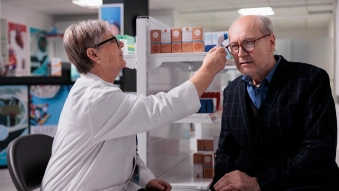- Platform
- About us
- Resources
- Events
WhiteSpace Health Blogs

Primary Care in the Age of Convenience
by Chris Cousins, MBA
Introduction
As healthcare consumerism rises, the ‘medtail’ trend continues to grow, reshaping primary care nationwide. The new term, medtail, refers to healthcare services that are delivered in retail setting. Our lives are busier than ever, and patients are less willing to burn their precious paid time off to visit their primary care provider when it is convenient for the practice. The rapidly emerging “digital first” patients are now demanding the convenience of evening and weekend appointments. They also want convenient locations close to where they run errands and major retailers like CVS and Walmart are now at the forefront of this trend, which blends medical services with retail settings.
Is medtail service as good as it seems? While these retail clinics offer convenience, they may lack the depth and continuity of care found in traditional primary care settings. “Patients have choices and are voting with their wallets, prioritizing convenience, quality and experience", says Chris Cousins, a 30-year veteran healthcare executive.
Can existing physician-owned and health system affiliated clinics rise to this challenge to reclaim market share? Adapting to patient expectations and delivering high-quality services while maintaining a healthy revenue cycle are key themes to satisfying this new breed of consumer patients. One healthcare executive in Atlanta, Chris Cousins, believes, “Successful healthcare organizations need to meet patients where they are – with straightforward, easily accessible care at an affordable price.”

Where Health Checks Meet Price Checks
Let us begin by tracing the rise of healthcare consumerism. The last two decades have witnessed a surge of urgent care hubs, bridging the service gap between traditional doctors and emergency hospital visits. Positioned strategically close to residential and shopping areas, these 'doc-in-the-box' centers sport a retail aesthetic with prominent signage, ensuring they seamlessly merge with their surroundings.
Healthcare organizations began by setting up shop in high-street storefronts, repurposed malls, and erstwhile big-box retailers' premises, capitalizing on affordable rental rates post-pandemic. According to CoStar Group's analytics, around 20% of medical leasing currently happens in retail estates.

“Thirty-two enclosed malls across the country have healthcare providers taking up substantial square footage or, in some cases, the entire property,” said Ellen Dunham-Jones, a Georgia Tech professor tracking the retrofitting of ailing malls. Even large health centers are hopping on the trend, as seen by the University of Rochester's initiative in New York: a $227 million orthopedic outpatient facility sprawling over 350,000 square feet, nestled within Henrietta's The Marketplace Mall.
CVS Health pioneered this movement in 2005 by launching MinuteClinic, the largest walk-in medical clinic in the United States. More than 50% of the U.S. population lives within 10 miles of a MinuteClinic, conveniently located inside or beside the pharmacy premises. Currently, their numbers have grown to nearly 1,200 clinics across the country. Patient visits have increased from fewer than one million to more than 50 million. Walmart Health Centers, located within Supercenters, offer various services, including primary and urgent care, dental care, counselling, diagnostics, and virtual care.
The Impact on Traditional Clinics
The 'medtail' trend has made waves in the healthcare sector, especially in primary care. As with every wave - some can ride it, while others face the brunt.
Regardless of location and ownership affiliation, healthcare organizations need to be paid for care that is rendered. Whether this is through a membership to a primary care service, fee for service at a discounted price point, or acceptance of Medicaid, Medicare or a more traditional insurance and patient co-pay model, providers need to receive a predictable revenue stream for the care they provide to stay in business.
AI for the Revenue Cycle is Essential Technology
With any emerging trend, having fresh data on hand to immediately spot opportunities and issues – at an individual location or across a portfolio – is essential to growing and thriving amongst change. While there is a lot of market noise about clinical use of AI for diagnosis and management of care, AI platforms that are purpose-built to support the revenue cycle are equally important.
Most people don’t fully appreciate the complexity of the revenue cycle. Payers have their own rules. Individual states have rules for their Medicare programs. The federal government publishes rules for Medicare and now that Medicare Advantage programs are privatizing some segments of the Medicare market, the rules that govern these claims are murky. Additional stakeholders include the care providers, their patients and families and often employers and brokers who fund the insurance coverage. It is complicated. Very complicated. And keeping track of all the rules and all of the data needed to facilitate correct payment requires a sophisticated platform with robust AI.
Using AI to convert data into insights and guided steps that address myriad issues is essential to ensure a predictable revenue stream. Without an AI platform and high quality data, healthcare organizations will struggle to remain fiscally sound and continue its mission to provide care.
It does not have to be this way. Innovative analytics solutions such as the WhiteSpace Health Platform create normalized datasets from the vast amounts of incoming data each day. AI automatically finds and reports areas of revenue leakage. ML (machine learning) scours this data to find patterns where claims were successfully resolved. It also translates these patterns into human readable steps that staff can take to resolve the claim or a batch of similar claims. And smart revenue cycle managers will collaborate with their peers and take this information upstream. This might lead to actions such as re-training of staff, or even the introduction of mobile-first processes the include patient input – with the goal of eliminating the issues from occurring at all.
Conclusion
Caught in the center of industry's changing tides, clinics continue to adapt and stand strong. Their focus on quality care remains constant, even in the face of external convenience challenges, bolstered by the right tech tools and platforms.
About Chris Cousins
